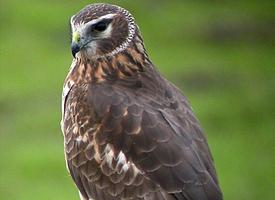
Váhy a míry
| Délka | od 62 do 74 cm |
|---|---|
| Hmotnost | od 1,5 do 3,5 kg |
| Délka rozpětí křídel | od 165 do 190 cm |
Biologická data
| Délka života | od 50 do 60 let |
|---|
Popis zvířete
The Steppe Eagle (Aquila nipalensis) is a magnificent bird of prey, belonging to the family Accipitridae, which includes other eagles, kites, hawks, and Old World vultures. This large raptor is distinguished by its impressive size, powerful build, and a wingspan that can reach up to 2.2 meters (7.2 feet), making it a formidable presence in its natural habitat.The Steppe Eagle's plumage is predominantly dark brown, with lighter, almost golden-brown feathers on the nape and the back of the neck, creating a subtle yet striking contrast. Its head is robust, with keen, piercing yellow or brown eyes that reflect its acute sense of vision, essential for spotting prey from great distances. The beak is strong and hooked, designed for tearing flesh, while its powerful legs and talons are well adapted for hunting and grasping its prey.
Juvenile Steppe Eagles are generally lighter in color than adults and acquire the darker adult plumage over several years. The species exhibits slight sexual dimorphism, with females typically being larger than males, a common trait among birds of prey.
Native to the steppe regions of Eastern Europe and Central Asia, the Steppe Eagle's range extends through Mongolia to the northeastern parts of China for breeding. In the winter, it migrates south to Africa and the Indian subcontinent, covering remarkable distances in its seasonal movements. The species prefers open, dry habitats such as semi-desert, grasslands, and savannas, where it can soar and glide on thermal updrafts while scanning the ground for food.
The diet of the Steppe Eagle primarily consists of small mammals, such as rodents and ground squirrels, though it is also known to eat small birds, reptiles, and carrion. Its hunting technique is versatile, involving soaring flight, still hunting from a perch, and occasionally, walking on the ground to catch prey by surprise.
Breeding takes place in the spring, upon the birds' return to their breeding grounds. The Steppe Eagle is a solitary nester, with pairs typically laying 1 to 3 eggs in a large nest built on the ground or on a low cliff ledge. Both parents are involved in incubation and rearing of the young, which fledge approximately 45 to 60 days after hatching.
The Steppe Eagle is currently facing threats from habitat destruction, human disturbance, and the use of pesticides and rodenticides, which reduce their prey base and pose direct poisoning risks. The species is listed as Endangered on the IUCN Red List, indicating that it faces a high risk of extinction in the wild.
Conservation efforts for the Steppe Eagle are focused on habitat protection, monitoring of populations, and reducing threats from pesticides and direct persecution. International cooperation is crucial, given the bird's wide-ranging migratory patterns, to ensure the survival of this majestic raptor for future generations to admire and study.
Podobná zvířata
Nové fotografie zvířat
Top 10 zvířat
- Dolphin gull (Leucophaeus scoresbii)
- Diana monkey (Cercopithecus diana)
- Stone loach (Barbatula barbatula)
- Moustached guenon (Cercopithecus cephus)
- Greek tortoise (Testudo graeca)
- Japanese macaque (Macaca fuscata)
- Galápagos tortoise (Geochelone nigra complex)
- Russian tortoise (Testudo horsfieldii)
- Common flying dragon (Draco volans)
- Galápagos penguin (Spheniscus mendiculus)


